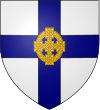 | |
| Long title | An Act to enable persons to be married in a place of worship in a parish in the Church in Wales with which they have a qualifying connection; and for connected purposes. |
|---|---|
| Citation | 2010 c.6 |
| Introduced by | Lord Rowe-Beddoe |
| Territorial extent | England and Wales |
| Dates | |
| Royal assent | 18 March 2010 |
| Commencement | 18 March 2010 |
Status: Current legislation | |
| Text of statute as originally enacted | |
| Text of the Marriage (Wales) Act 2010 as in force today (including any amendments) within the United Kingdom, from legislation.gov.uk. | |
The Marriage (Wales) Act 2010 c.6 is an Act of Parliament in the United Kingdom. Introduced as a private member's bill by David Rowe-Beddoe, Baron Rowe-Beddoe and sponsored by Alun Michael MP, it received royal assent on 18 March 2010. It created the Church in Wales's counterpart to mirror the Church of England Marriage Measure 2008 No. 1 and brought the Church in Wales's marriage regulations into line with those of the Church of England.[1]
YouTube Encyclopedic
-
1/3Views:572 83511 196614
-
Masters of Wedding Photography
-
Portrait of a Presidency: Pete Souza's Photography of the Obama Years
-
1 in 20 people in the UK workforce are either gay, lesbian or bisexual
Transcription
Background
The Church in Wales had been disestablished from the Church of England since 1920 following the Welsh Church Act 1914. It had the effect of severing the Church in Wales's links with the canon law of the Church of England.[2] This meant that any Measures passed by the Church of England no longer had legal force over the Church in Wales. Any changes made to the Church in Wales's legal situations must be made via an Act of Parliament, as the Senedd has no jurisdiction over ecclesiastical law or marriage law because those are reserved matters.[3]
Prior to the Act, when two people wished to marry in Wales, ordinarily, at least one of them would have to live in the parish where they would get married or have attended the parish church for the previous six months.[4] The Act allowed couples to use a parent's residency or regular attendance in the specific Church as a valid condition to be married in that parish; or for the church to have been the place where one of the parties to the marriage had been baptised or confirmed; or for the church to have been where a parent or grandparent of one of the parties to the marriage had been married.[4]
History

In 2008, the General Synod of the Church of England passed the Church of England Marriage Measure 2008, which extended the rights of marriage within their churches to allow people to marry in churches where they had been christened or confirmed as well as in churches where any of their parents or grandparents had been married. This led to the Church in Wales being out of step with the Church of England, as the Measure only applied to the Church of England, and the Church in Wales continued to use the old requirements of either residency in the parish or regular church attendance for the previous six months.[4] As the Church in Wales Governing Body's actions have no legal force in English law, legislation from Parliament was required to bring the Church in Wales into line with the Church of England.[5][2]
In 2009, the Governing Body debated and accepted Private Members' Motion (No 09/13), which requested that the Church in Wales take steps to bring the church's marriage regulations into line with those of the Church of England.[1] The Marriage (Wales) Bill was drafted by the Governing Body of the Church in Wales and brought forward into Parliament as a private member's bill in the House of Lords by the chairman of the Representative Body of the Church in Wales, Lord Rowe-Beddoe.[5] The text was drafted by the Church in Wales' Governing Body.[1] It passed through the House of Lords without amendment.[6] In the House of Commons, the bill was sponsored by the Labour Co-operative Member of Parliament, Alun Michael.[4] The act received Royal Assent from Queen Elizabeth II on 18 March 2010,[6] before the dissolution of Parliament.[1] The Marriage (Wales) Act 2010 was viewed by academics as being an example of a disestablished church enjoying the privileges of establishment but without the legal ability to self-regulate itself and requiring primary legislation to make desired changes.[1]
See also
References
- ^ a b c d e Roberts, Nicholas (January 2011). "The Historical Background to the Marriage (Wales) Act 2010" (PDF). Ecclesiastical Law Journal. 13 (1): 39–56. doi:10.1017/S0956618X10000785. S2CID 144909754.
- ^ a b "The Church in Wales Briefing Note". National Assembly of Wales. Retrieved 12 May 2017.
- ^ "Report into the Inquiry into Law-making and the Church in Wales" (PDF). National Assembly for Wales. Retrieved 12 May 2017.
- ^ a b c d "Marriage (Wales) Act 2010". Parliament of the United Kingdom. 18 March 2010.
- ^ a b Cranmer, Frank (15 June 2013). "Disestablishing the Church in Wales – at last?". Law and Religion UK. Retrieved 12 May 2017.
- ^ a b "Bill stages — Marriage (Wales) Act 2010". Parliament of the United Kingdom. Retrieved 12 May 2017.
